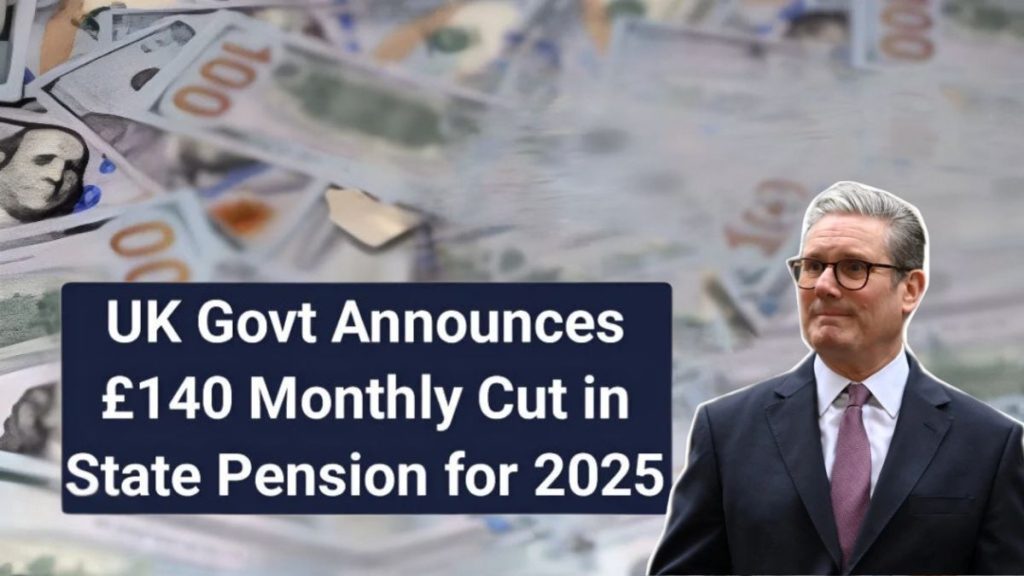The UK Government has officially confirmed a significant rise in the National Minimum Wage and National Living Wage, set to take effect from 1 October 2025. The change will directly benefit millions of workers across the country, especially those struggling to meet everyday living costs amid ongoing inflation and economic pressures.
Following extensive consultation with the Low Pay Commission (LPC), this increase marks one of the largest year-on-year wage hikes in over a decade. It forms part of the government’s broader plan to ensure fair pay, improve job satisfaction, and protect workers’ purchasing power during a time of rising prices.
Government Confirmation: What’s Changing from October 2025

In its official statement, the Department for Business and Trade announced that the National Living Wage — the rate for workers aged 21 and over — will rise from £11.44 to £12.12 per hour starting October 2025.
This boost represents a major 6% increase, ensuring full-time employees receive a meaningful uplift in their pay packets. The move comes as part of the government’s pledge to “make work pay” and support millions of low-income earners during the cost-of-living crisis.
Business Secretary Kemi Badenoch said the increase will “help hard-working people keep more of what they earn,” while Prime Minister Rishi Sunak emphasised that the government remains committed to rewarding work and tackling in-work poverty.
Full Breakdown: New UK Minimum Wage Rates for 2025
Here is the official list of the new 2025 minimum wage rates across the United Kingdom:
| Category | New Rate (from 1 October 2025) | Previous Rate |
|---|---|---|
| National Living Wage (21 and over) | £12.12 per hour | £11.44 |
| Aged 18 to 20 | £9.30 per hour | £8.60 |
| Aged 16 to 17 | £6.92 per hour | £6.40 |
| Apprentices | £6.40 per hour | £5.90 |
This adjustment means that a full-time worker (37.5 hours/week) on the National Living Wage will now earn around £471 per week — compared to £429 previously — translating to an annual increase of over £2,200 before tax.
Why the UK Minimum Wage Is Rising
The Low Pay Commission (LPC) recommended the 2025 wage increase after reviewing national economic data and consulting with employers, trade unions, and worker representatives.
The main objectives behind the decision include:
- Supporting low-income workers as living costs remain elevated.
- Ensuring wage growth keeps pace with inflation.
- Promoting productivity and workforce participation.
- Moving closer to achieving a “high wage, high skill, high productivity” economy.
The LPC report stated that “the increase is necessary to maintain fairness and close the pay gap, especially for young and part-time workers.”
How the Wage Rise Affects Different Age Groups
The impact of the 2025 wage increase will vary depending on age and employment type:
- For 21 and over (National Living Wage workers): The rise to £12.12 ensures adults in full-time employment receive one of the most substantial pay hikes in recent years.
- For 18–20-year-olds: This group will see nearly an 8% pay rise, closing the gap between the adult rate and younger brackets — the highest jump since 2019.
- For 16–17-year-olds and apprentices: The new rates make early career work and training more attractive, supporting youth employment and vocational pathways.
By narrowing age-based pay gaps, the government aims to make entry-level work fairer and more rewarding across industries.
How the 2025 Wage Rise Compares to Previous Years
The National Living Wage has grown steadily since its launch in 2016, but the 2025 increase marks a major milestone.
| Year | National Living Wage |
|---|---|
| 2021 | £8.91 |
| 2022 | £9.50 |
| 2023 | £10.42 |
| 2024 | £11.44 |
| 2025 | £12.12 |
This means the National Living Wage will have risen by over 65% in just four years, outpacing both inflation and average pay growth in many sectors.
Workers’ Reactions: Relief Amid Rising Living Costs
Across the UK, the announcement has been met with relief and optimism among low-paid workers, especially in retail, hospitality, and care sectors.
Many employees have welcomed the rise, saying that even a small hourly increase provides meaningful help with household expenses such as food, rent, and utility bills.
However, some small business owners warn that the higher payroll costs may strain their budgets, particularly in sectors like hospitality, childcare, and healthcare, where profit margins are already thin.
Trade unions including Unite and GMB praised the government’s decision but urged further steps to strengthen job security and protections for part-time and zero-hours workers.
Government’s Message to Employers and Businesses
Business Secretary Kemi Badenoch said that while the wage rise will require adjustment, it will ultimately strengthen the economy:
“This increase will not only support workers but also stimulate local economies by putting more money in people’s pockets.”
The government encouraged employers to prepare in advance by updating payroll systems, staff contracts, and budget forecasts before October 2025.
Small businesses are advised to take advantage of government support schemes and digital payroll tools to ensure a smooth transition to the new rates.
Economic Impact: Boost for Workers, Mixed Effects for Businesses
Economists estimate that the 2025 wage increase will inject billions of pounds into the economy through higher consumer spending.
The Office for Budget Responsibility (OBR) projects that while the short-term effect may raise inflation slightly (by about 0.1%), the long-term outcome will improve household finances, productivity, and workforce morale.
Professor Jonathan Portes from King’s College London commented:
“This increase is a necessary step to support low-income families. Regional differences in living costs remain, but overall this will help narrow inequality across the UK.”
Comparison with Other Countries
With the new £12.12 National Living Wage, the UK remains among the highest-paying advanced economies for minimum-wage earners.
By comparison:
- France: €11.65/hour (approx. £10.10)
- Germany: €12.41/hour (approx. £10.75)
- Canada (average): C$17/hour (approx. £9.80)
The UK’s new rate positions it well above many OECD peers, reinforcing its reputation for strong worker protection and fair pay legislation.
What Workers Should Do Before the Change
If you’re currently earning close to the minimum wage, here’s how to prepare for the October 2025 update:
- Check your payslip to ensure your employer applies the correct new rate.
- Review your budget and savings goals — your monthly income will rise.
- Speak to HR or payroll to confirm which wage category you fall under.
- Consider upskilling or training, as higher wage brackets may lead to new responsibilities.
- Track official updates on GOV.UK for any further wage or tax-related announcements.
Employers, meanwhile, should start financial planning early and communicate upcoming changes to their workforce.
Reaction from the Business Community
While most business groups accept the need for fair wages, some warn of potential consequences for small enterprises.
The Federation of Small Businesses (FSB) stated that while higher wages improve living standards, smaller firms may struggle to absorb additional costs without price increases or workforce adjustments.
To ease pressure, the government is expected to review tax incentives, apprenticeship funding, and energy cost relief measures later in 2025.
The Long-Term Goal: A High-Wage, High-Productivity UK
The 2025 rise fits within the government’s long-term vision for a “high wage, high skill, high productivity” economy.
By ensuring that workers are paid fairly for their efforts, policymakers hope to encourage greater participation in the labour market, particularly among younger and lower-income groups.
The Low Pay Commission’s target remains clear — to keep the National Living Wage at two-thirds of median earnings, a benchmark set to ensure pay keeps pace with the broader economy.
FAQs on the 2025 UK Minimum Wage Rise
1. When will the new UK minimum wage rates take effect?
The new rates will come into force on 1 October 2025 across the United Kingdom.
2. What is the new National Living Wage for 2025?
The National Living Wage (for workers aged 21 and over) will rise to £12.12 per hour, up from £11.44.
3. How much will younger workers and apprentices earn?
- 18–20-year-olds: £9.30/hour
- 16–17-year-olds: £6.92/hour
- Apprentices: £6.40/hour
4. How does this rise affect full-time workers?
A full-time employee working 37.5 hours a week on the National Living Wage will now earn about £471 per week or roughly £2,200 more per year before tax.
5. Will businesses receive government support to manage higher costs?
The government has pledged to provide ongoing support to small businesses through training grants, digital payroll tools, and other relief schemes



















